Ai Iwane: A New River
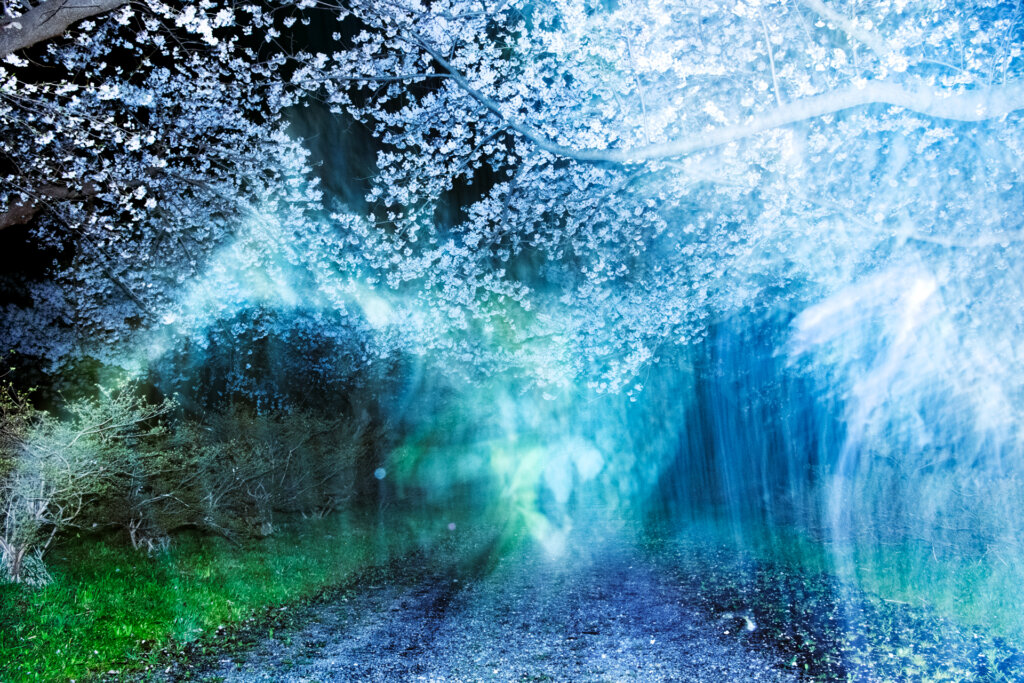
Tenshochi, Kitakami, Iwate
from the series A New River
2020 | archival pigment print | 948 × 1422 mm
© Ai Iwane, courtesy KANA KAWANISHI GALLERY
Photo London is delighted to present a portfolio of images from the Japanese artist Ai Iwane’s series A New River and KIPUKA, accompanied by a short essay by Tetsuro Ishida Curator of the Tokyo Photographic Art Museum. Works by Ai Iwane are on view at Photo London Digital with Kana Kawanishi gallery.
A New River
Essay by Tetsuro Ishida, Curator, Tokyo Photographic Art Museum
English Translation by Christopher Stephens

Fissure 8, Leilani, Hawaii
from the series KIPUKA
2018 | archival pigment print | 600 × 900 mm
© Ai Iwane, courtesy KANA KAWANISHI GALLERY
In her earlier work KIPUKA, which earned widespread acclaim after winning the Kimura Ihei Award and the Ina Nobuo Award in 2018, the artist referenced the history and culture of two places, Hawaii and Fukushima, and rendered visible both fading memories of the past and the activities of the people alive today: a Hawaiian cemetery for Japanese immigrants swallowed up in lava from a volcanic eruption, the excitement of local Bon festival dances, images of deceased migrants appearing like apparitions in sugarcane fields, people of Fukushima who were unable to return to their homes in the no-go zone evacuated due to the nuclear accident. Iwane says that through her journeys from Hawaii to Fukushima pursuing the roots of Bon dance songs that were transmitted across the ocean in the early 20th century and continue to be passed down today, she gained deep perspectives on the past and the world of today, measured in units of 100 years.
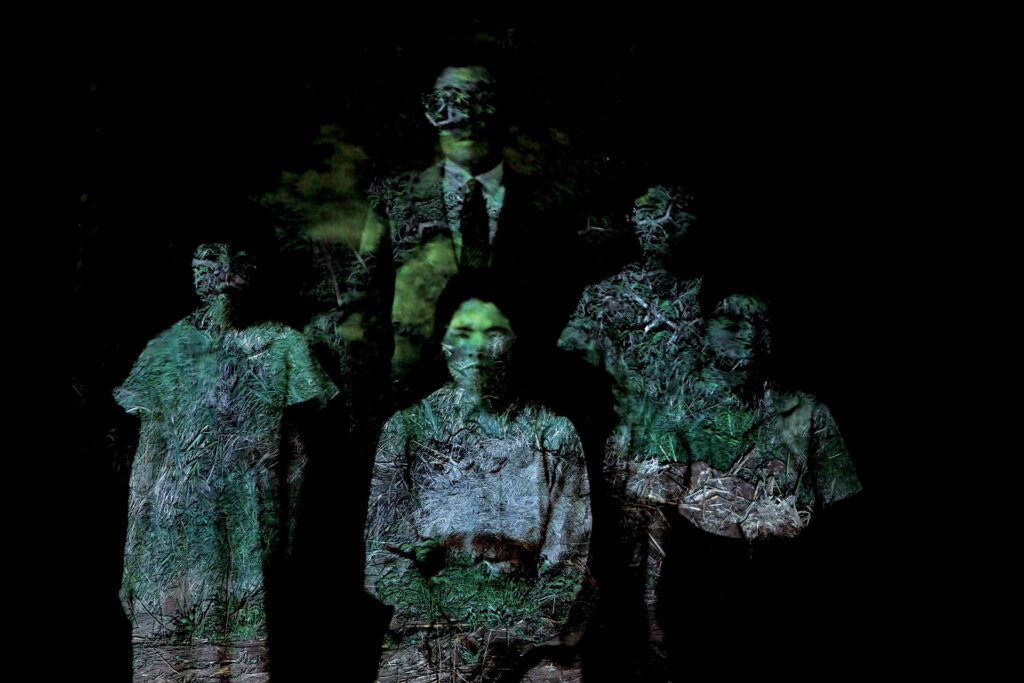
FUKUSHIMA ONDO, Shosuke Nihei, Kailua Camp
from the series KIPUKA
2016 | archival pigment print | 1118 × 1647 mm
© Ai Iwane, courtesy KANA KAWANISHI GALLERY
Iwane used a 1930s Kodak Cirkut full-rotation panoramic camera, which had actually been used in photo studios run by Japanese migrants, to photograph people alive today and the environments they inhabit. The compositions of the works, in which panoramic shots are assembled so as to symbolically connect past history and the present day, are in a unique mode that emerged from Iwane’s distinctive viewing of history in 100-year units.

Pahoa, Hawaii, Hawaii
from the series KIPUKA
2014 | archival pigment print | 25 × 191 cm
© Ai Iwane, courtesy KANA KAWANISHI GALLERY

Honolulu, Hawaii, Hawaii
from the series KIPUKA
2015 | archival pigment print | 25 × 191 cm
© Ai Iwane, courtesy KANA KAWANISHI GALLERY
In spring 2020 Iwane was in Fukushima Prefecture, where she is based, working on panoramic photographs of this year’s cherry blossoms. The resulting work was shot “in the midst of a vortex of all kinds of unprecedented events,” including travel restrictions resulting from the coronavirus.* She said that she could not stop thinking of the words of a taiko drummer from Fukushima she met during a previous photographic project, who was unable to return to his hometown and described it with this image: “A demon crawls on all fours, in a grove of cherry trees after everyone has gone.” What was Iwane, with these words as a source of inspiration, seeking when she released the camera shutter in a now-deserted grove of cherry trees in full bloom, in a world where connections among people have been slashed? In darkness full of growling beasts, sensing specters close at hand, the “self” wanders in search of the “demon.” In this work, the artist superimposes the Tohoku cherry blossoms “blooming riotously as if diseased” and cherry blossoms in her own memory––a family photo showing her sister who took her own life, and the row of cherry trees across from her parents’ house.
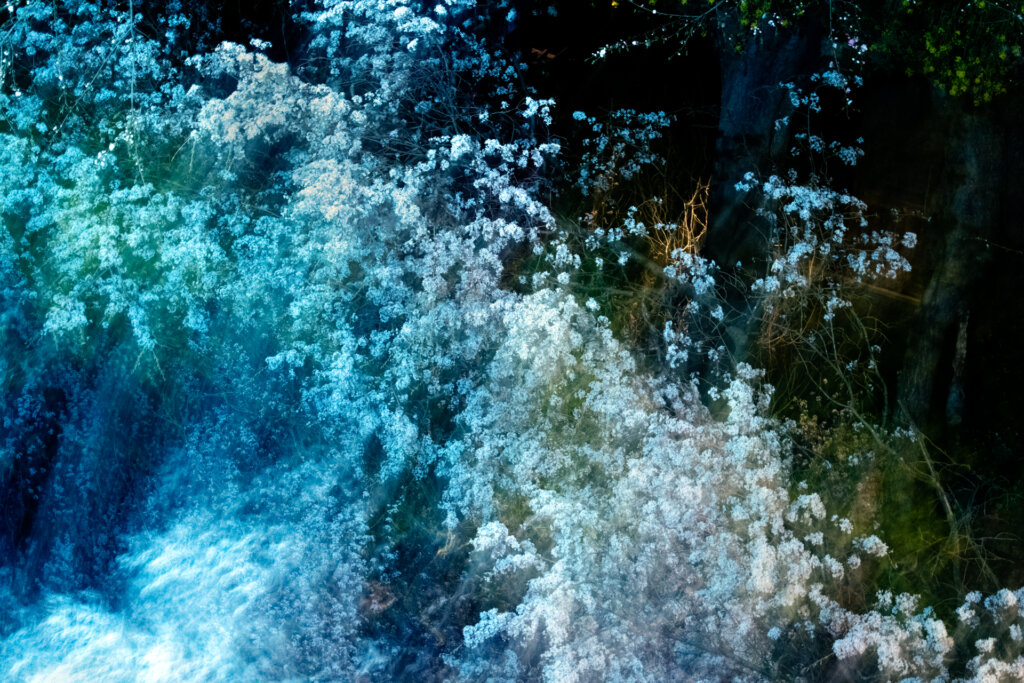
Takashiba Dekoyashiki, Koriyama, Fukushima
from the series A New River
2020 | archival pigment print | 948 × 1422 mm
© Ai Iwane, courtesy KANA KAWANISHI GALLERY
If we trace the concept of the demon in Japanese culture, we find its roots in the medieval Japanese court ceremony of oniyarai (ritual chasing-off of demons). This was the origin of today’s Setsubun customs (including throwing beans while chanting to repel demons from the home). In ancient rituals “demons,” the source of malevolence, defilement, and calamity, were driven away with a ritual involving re, song and dance. Iwane’s image of a “demon” as a formless evil presence that brings unhappiness to humans, crawling on all fours through a grove of cherry trees in full bloom, seems to react our emotional landscape in 2020, when spring came but the annual warding off of disaster failed to have an effect.
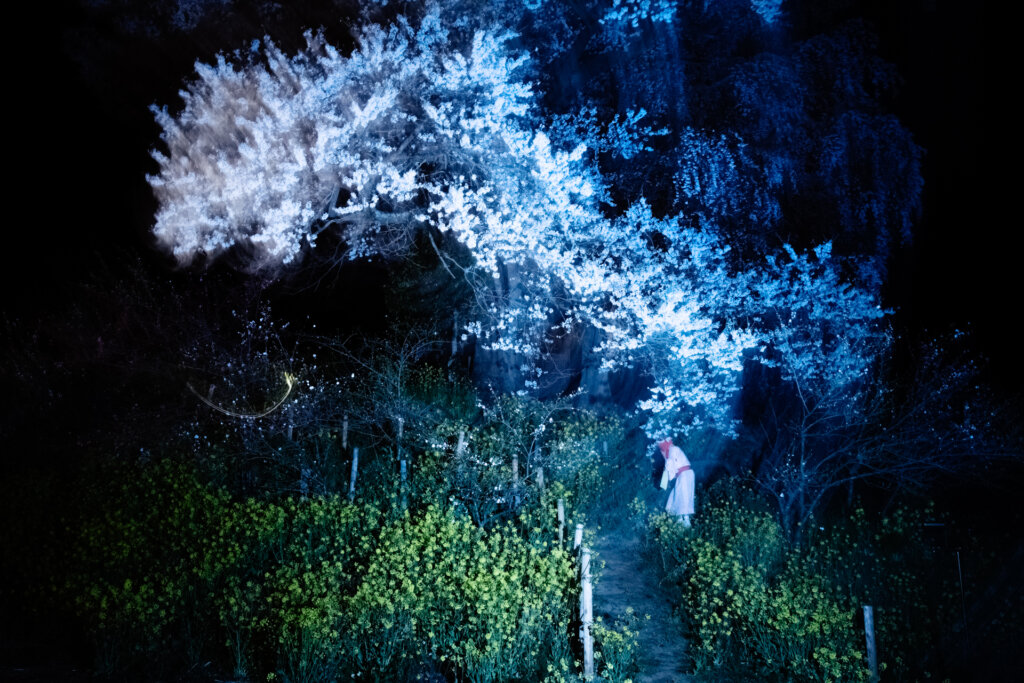
Takashiba Dekoyashiki, Koriyama, Fukushima
from the series A New River
2020 | archival pigment print | 948 × 1422 mm
© Ai Iwane, courtesy KANA KAWANISHI GALLERY

Niida, Hachinohe, Aomori
from the series A New River
2020 | archival pigment print | 948 × 1422 mm
© Ai Iwane, courtesy KANA KAWANISHI GALLERY
A New River is a narrative based around the artist’s own travels through Koriyama, Ichinoseki, Kitakami, Tono, and Hachinohe in search of cherry blossoms during the spring of the pandemic, on to which various elements of her experiences thus far, such as memories of her family, and the pulsating heartbeat of the earth itself, are superimposed and interwoven. This fantastical and highly personal work, a video and photographic installation in which the past and the present intersect, gives us a sense that we are seeing past memories, present events, and even the shadowy world of lost things. It is as if events occurring here and now are captured with a kind of shamanistic sensibility, connecting directly to the world of a thousand years ago. This ambitious work seeks to present a truly panoramic view of the past, present, and future measured not in years but in centuries.
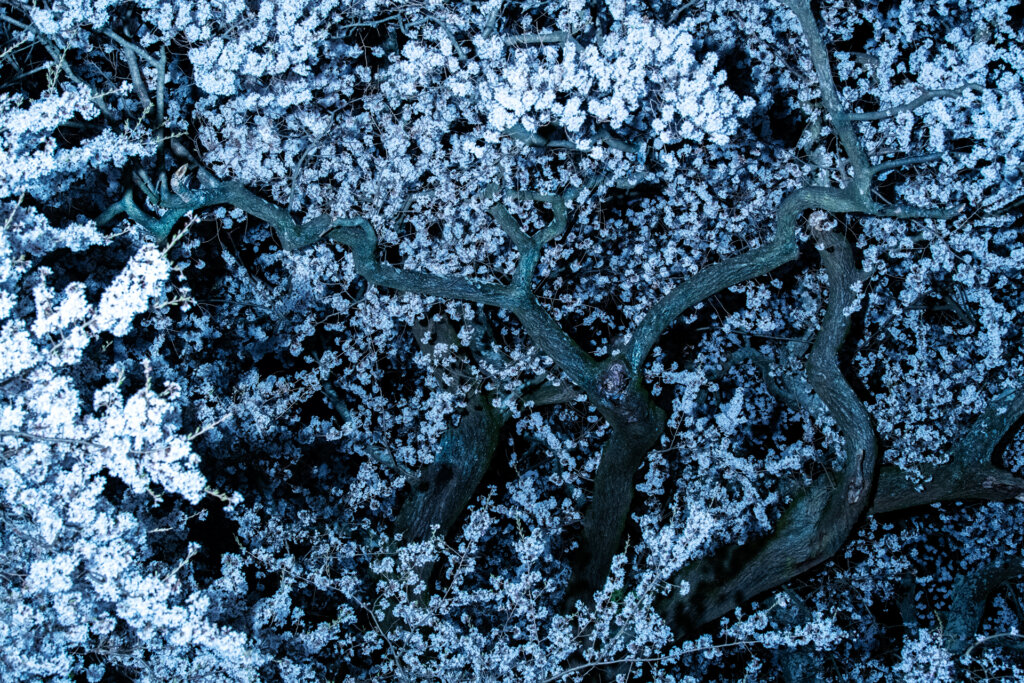
Takashiba Dekoyashiki, Koriyama, Fukushima
from the series A New River
2020 | archival pigment print | 948 × 1422 mm
© Ai Iwane, courtesy KANA KAWANISHI GALLERY
I feel that underlying Iwane’s work is an unwavering personal paradigm, of a kind rarely seen in a young contemporary artist. A paradigm is like a map we use to navigate the world. The tales woven by this artist are so powerful because they draw their own unique map of the world we all inhabit.
——Tetsuro Ishida
Curator, Tokyo Photographic Art Museum
*Quotation in the text is an excerpt of e-mail exchanges between the artist and the author.
Biographies:
Ai Iwane was born in Tokyo. She relocated to the United States and enrolled in Petrolia High School in 1991, and led an off-grid and self-sufficient life while studying. Since 2006, Iwane has focused on the Japanese community’s culture in Hawaii and settled her second base in Miharu, Fukushima in 2013. Since then, she has continuously examined the relevance between Hawaii and Fukushima from the aspect of immigration and put her research into her works. Her monographs include A NEW RIVER (Bookshop M, 2020), and KIPUKA (Seigensha Art Publishing, 2018). Iwane was awarded The 44th Kimura Ihei Photography Award and the 44th Ina Nobuo Award. Her works have been collected at the Tokyo Photographic Art Museum.
Tetsuro Ishida was born in Osaka in 1968. He worked as a curator at the Museum of Contemporary Art, Tokyo during 1995-2002, and since 2003 has been working as a curator at the Tokyo Photographic Art Museum (formally the Tokyo Metropolitan Museum of Photography). The exhibitions he curated include “Naito Masatoshi: Another World Unveiled (Tokyo Photographic Art Museum, 2018), “Kawauchi Rinko: Illuminance, Ametsuchi, Seeing Shadow” (Tokyo Metropolitan Museum of Photography, 2012), “Araki Nobuyoshi: Sentimental Photography, Sentimental Life” (Museum of Contemporary Art, Tokyo, 1999), and more others.
To access the full length talk you need to be registered and logged in.

